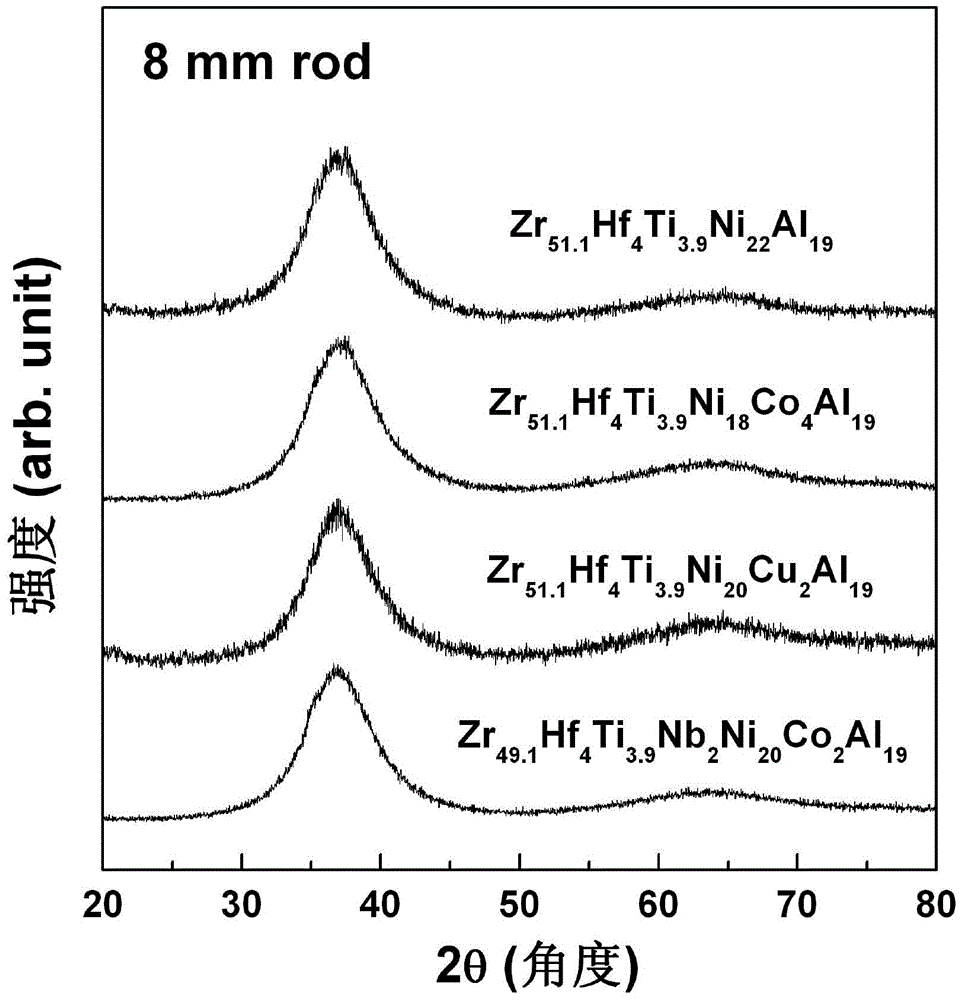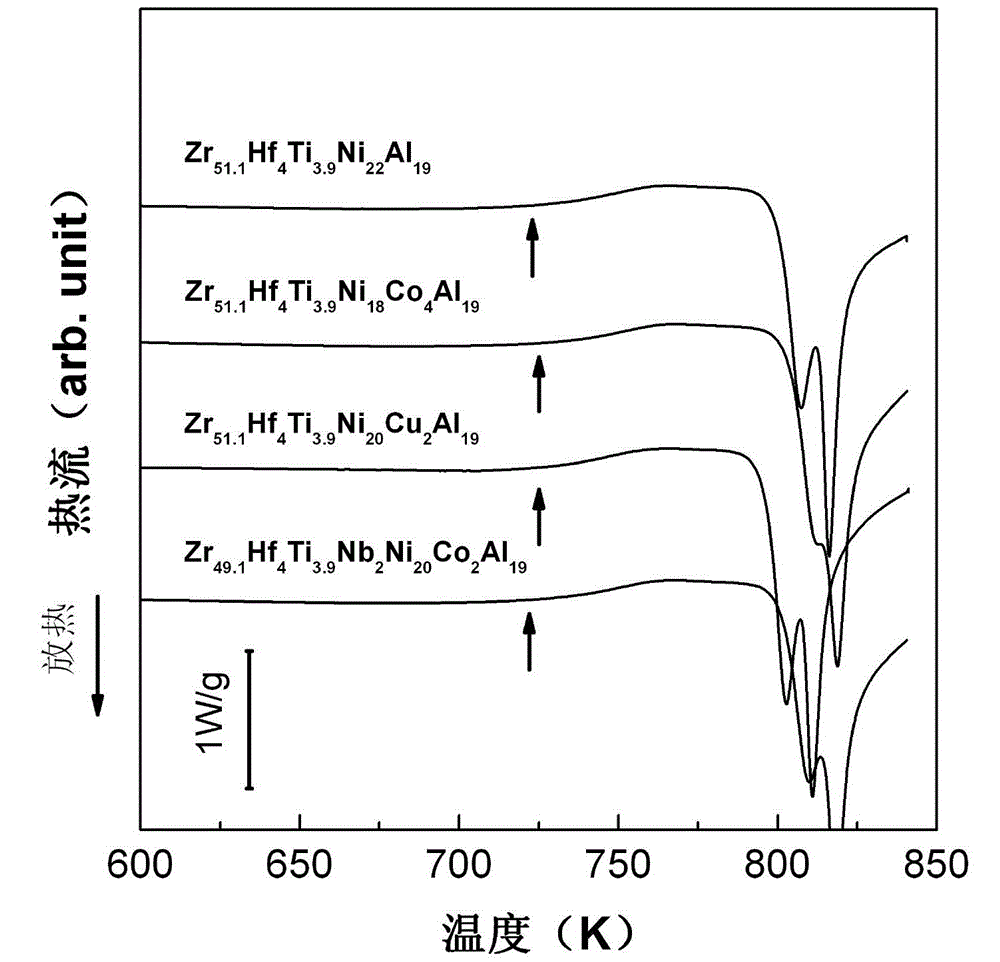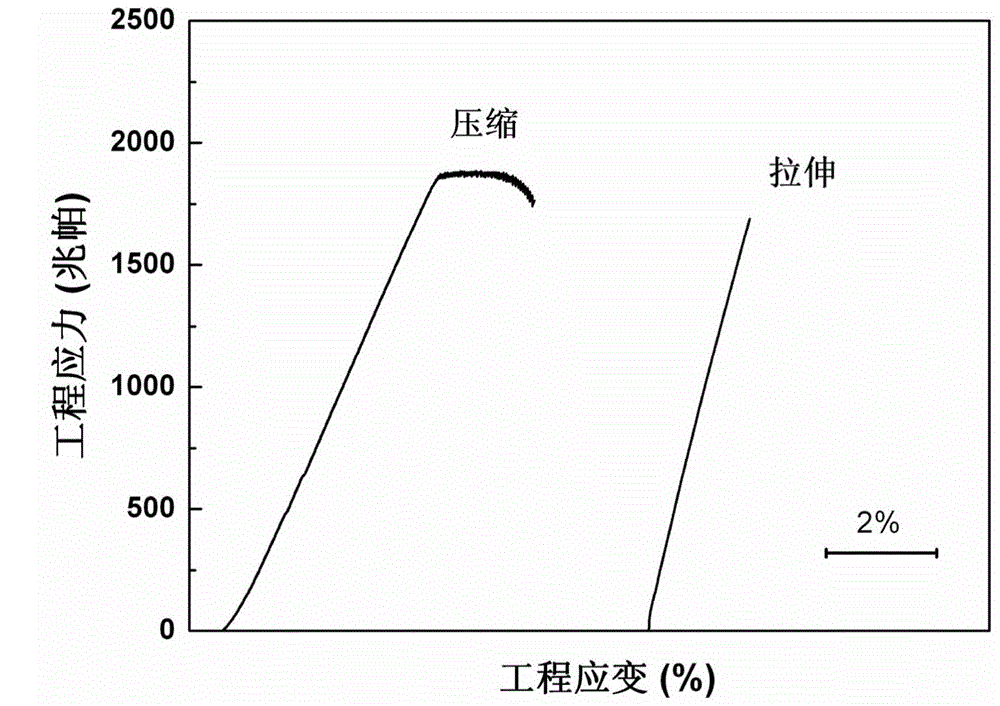Zr-based amorphous alloy having strong glass-forming ability
A zirconium-based amorphous alloy and glass technology, applied in the field of zirconium-based amorphous alloys, can solve problems such as small size and limited application range
- Summary
- Abstract
- Description
- Claims
- Application Information
AI Technical Summary
Problems solved by technology
Method used
Image
Examples
Embodiment 1
[0018] Example 1: Casting Zr 51.1 Hf 4 Ti 3.9 Ni 22 al 19 Alloy rods (nominal composition is atomic percentage, the same below)
[0019]Using commercially available pure metal Zr, Hf, Ti, Ni, Al elements such as rods, blocks, ingots, plates and other bulk materials (purity higher than 99.5%, weight percentage) as starting materials, in an argon atmosphere purified by titanium The lower electric arc is smelted into a five-element master alloy ingot. The master alloy ingot needs to be smelted several times to ensure the uniformity of the composition. Take 40 grams of master alloy material and place it in a water-cooled copper crucible, heat it in an electric arc furnace to above the melting point, turn over the water-cooled copper crucible after melting, and pour the melt into a copper mold. The geometric shape of the inner cavity of the copper mold is φ8mm×110mm (different diameters and lengths or other geometric shapes can be selected according to needs). After the melt...
Embodiment 2
[0020] Example 2: Casting Zr 53.1 Hf 2 Ti 3.9 Ni 22 al 19 Alloy bar
[0021] Using commercially available pure metal Zr, Hf, Ti, Ni, Al elements such as rods, blocks, ingots, plates and other bulk materials (purity higher than 99.5%, weight percentage) as starting materials, in an argon atmosphere purified by titanium The lower electric arc is smelted into a five-element master alloy ingot. The master alloy ingot needs to be smelted several times to ensure the uniformity of the composition. Take 35 grams of master alloy material and place it in a water-cooled copper crucible, heat it in an electric arc furnace to above the melting point, turn over the water-cooled copper crucible after melting, and pour the melt into a copper mold. The geometric shape of the inner cavity of the copper mold is φ7mm×110mm. After the melt is cooled, an amorphous wafer rod with a diameter of 7 mm and a length of 80 mm is formed.
Embodiment 3
[0022] Example 3: Suction casting Zr 52.9 Hf 3.9 Ti 4.1 Ni 22 al 17.1 Alloy bar
[0023] Using commercially available pure metal Zr, Hf, Ti, Ni, Al elements such as rods, blocks, ingots, plates and other bulk materials (purity higher than 99.5%, weight percentage) as starting materials, in an argon atmosphere purified by titanium The lower electric arc is smelted into a five-element master alloy ingot. The master alloy ingot needs to be smelted several times to ensure the uniformity of the composition. Take 2.5 grams of master alloy material and place it in a water-cooled copper crucible, heat it in an electric arc furnace to above the melting point, increase the current immediately after melting, the viscosity of the melt decreases, and it is sucked into the copper mold due to its own gravity. It is also possible to add an appropriate amount of pressure difference between the electric arc furnace and the inner cavity of the copper mold, and rely on the pressure differen...
PUM
| Property | Measurement | Unit |
|---|---|---|
| yield strength | aaaaa | aaaaa |
| diameter | aaaaa | aaaaa |
| breaking strength | aaaaa | aaaaa |
Abstract
Description
Claims
Application Information
 Login to View More
Login to View More - R&D
- Intellectual Property
- Life Sciences
- Materials
- Tech Scout
- Unparalleled Data Quality
- Higher Quality Content
- 60% Fewer Hallucinations
Browse by: Latest US Patents, China's latest patents, Technical Efficacy Thesaurus, Application Domain, Technology Topic, Popular Technical Reports.
© 2025 PatSnap. All rights reserved.Legal|Privacy policy|Modern Slavery Act Transparency Statement|Sitemap|About US| Contact US: help@patsnap.com



